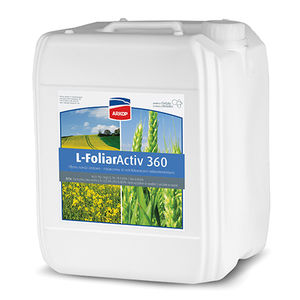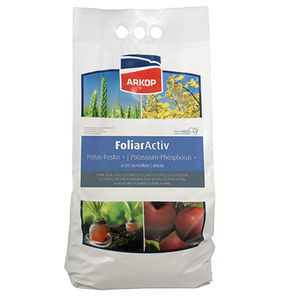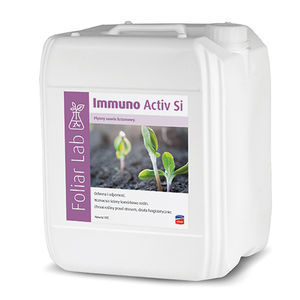
- Seeds and crop inputs
- Crop input
- Mineral biostimulant
- Przedsiebiorstwo ARKOP Sp. z o.o.
Mineral biostimulant Aminos Selenitwith trace elementsliquiddeficiency corrector
Add to favorites
Compare this product
Characteristics
- Type
- mineral
- Main composition
- with trace elements
- Format
- liquid
- Function
- deficiency corrector, antioxidant
- Applications
- foliar application
Description
Role of selenium in the mineral homeostasis of plants.
Even though selenium has not yet been classified as a chemical element essential in the nutrition of plants, its favorable effects have already been confirmed. In studies carried out in recent years on cereals and other species of crop plants (including the cabbage, head lettuce, cucumber and soybean), it has been proven that plant supplementation with fertilizers containing Se may contribute to their growth rate and biomass accumulation (El-Ramady et al., 2015)2. Selenium as a cofactor of antioxidant enzymes is also essential for the neutralization of harmful free radicals. The antioxidative effects of selenium contribute to hindering the senescence of plant organs (Djanaguiraman et al., 2005)3. Selenium also acts as a regulator, enabling the proper functioning of the immune system. Recent studies have also demonstrated the involvement of selenium in plant reactions to abiotic stress factors such as cold, drought, intense light, flooding, salinity and exposure to heavy metals (Feng et al., 2013)1.
Catalogs
No catalogs are available for this product.
See all of Przedsiebiorstwo ARKOP Sp. z o.o.‘s catalogsOther Przedsiebiorstwo ARKOP Sp. z o.o. products
NPK fertilizers
Related Searches
- Fertilizer
- Fertilizer with trace elements
- Mineral fertilizer
- Granular fertilizer
- Liquid fertilizer
- Foliar application fertilizer
- Organic fertilizer
- Soluble fertilizer
- NPK fertilizer
- Ground application fertilizer
- Fruit fertilizer
- Deficiency corrector fertilizer
- Biostimulant
- Potassium fertilizer
- Rich in magnesium fertilizer
- Arboriculture fertilizer
- Small farming fertilizer
- Root fertilizer
- Liquid biostimulant
- Vineyard fertilizer
*Prices are pre-tax. They exclude delivery charges and customs duties and do not include additional charges for installation or activation options. Prices are indicative only and may vary by country, with changes to the cost of raw materials and exchange rates.







